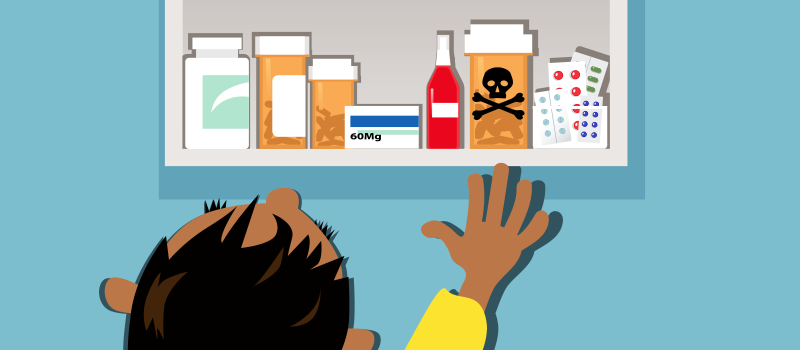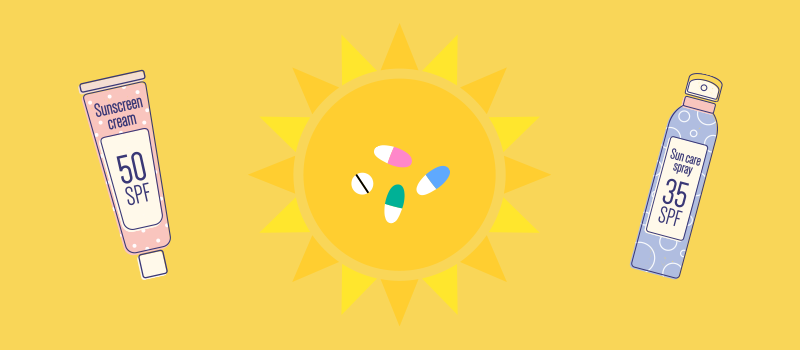What’s the Buzz
The Bee Healthy Blog
Dorzolamide Eye Drops: Uses & Side Effects

Dorzolamide is an eyedrop used to treat open-angle glaucoma, an eye condition causing elevated intraocular pressure. In patients with open-angle glaucoma or ocular hypertension, there is a buildup of fluid that is supposed to flow through the inside of the eye. High pressure inside the eye occurs as a result of this fluid buildup. Please continue reading to learn more about dorzolamide uses and side effects.
Are dorzolamide eye drops a beta blocker?
No, dorzolamide hydrochloride is not a beta blocker. It belongs to a group of medications called carbonic anhydrase inhibitors.
Are dorzolamide and timolol the same?
No, dorzolamide and timolol are not the same. While both medications are used to treat acute angle closure glaucoma (increased intraocular pressure) or ocular hypertension, they are different types of medications. Dorzolamide (brand name Trusopt) is a carbonic anhydrase inhibitor. Timolol (brand name Timoptic) is a beta blocker. A combination of dorzolamide and timolol (brand name Cosopt) can be used for lowering high pressure inside the eye.
What does dorzolamide do to the eye?
Dorzolamide lowers high pressure inside the eye. It blocks the action of an enzyme called carbonic anhydrase II. This affects sodium and fluid transport and decreases aqueous humor secretion. Aqueous humor is fluid in the front part of the eye.
Besides eye drops, carbonic anhydrase inhibitors are available in other dosage forms, such as oral tablets and injection solutions. If your increased eye pressure does not respond to the topical administration of a carbonic anhydrase inhibitor, such as dorzolamide, your eye doctor may prescribe an injectable carbonic anhydrase inhibitor, especially when vomiting is caused by acute angle-closure glaucoma. Oral carbonic anhydrase inhibitors are also available, though they are rarely used due to a significant side effects profile, including tingling fingers, metallic taste, and metabolic acidosis, which causes the buildup of acid in the body.
How to use dorzolamide ophthalmic solution?
Dorzolamide comes in the form of a 2% ophthalmic solution instilled in the affected eye every 8 hours (three times a day). Follow the dosing instructions from your doctor or pharmacist carefully. Do not change the dose or dosing frequency without your doctor’s approval. Also, do not stop using dorzolamide without talking to your provider. This medicine can control elevated intraocular pressure but does not cure glaucoma. It only works as long as you continue using it.
To instill dorzolamide eye drops, follow these steps:
- Wash your hands with soap and water.
- Make sure the dropper tip is not damaged.
- To prevent contamination, do not touch the dropper tip to your eye or any other surface.
- Tilt your head back and use your index finger to pull down your lower eyelid to form a small pocket.
- Hold the dropper close to your eye without touching it to your eye or surrounding skin.
- Place your other fingers against your face for stability.
- Look up and gently squeeze one drop of medicine into the pocket in your lower eyelid. Close your eye for 2-3 minutes and look down. Avoid blinking or squeezing your eyelids.
- Apply gentle pressure on your tear duct with a finger.
- Wipe excess liquid with a tissue.
- Wait at least 5 minutes before using another eye drop.
- Replace the cap on the dropper bottle. Do not rinse or wipe the dropper tip.
- Wash your hands to remove any residual medication.
What are the side effects of dorzolamide timolol eye drops?
Common side effects of dorzolamide (Trusopt) and dorzolamide/timolol (Cosopt) eye drops include temporary burning, stinging, and mild discomfort in the eye. Other side effects include light sensitivity, a bitter taste in the mouth, stomach upset, and vomiting.
Rarely, dorzolamide can cause very serious side effects, such as allergic reactions. Tell your doctor immediately if you develop a skin rash or eye redness, swelling, itching, watering, or dryness after using dorzolamide.
What precautions should I take while using dorzolamide?
Precautions before starting dorzolamide
Before starting dorzolamide, tell your doctor if you have ever had an allergic reaction to dorzolamide, other ocular hypotensive agents, sulfa drugs, or any other medications.
Give your doctor or pharmacist a complete list of your medications, including prescription drugs, over-the-counter (nonprescription) drugs, dietary supplements, and herbal products. This can help avoid possible drug interactions between dorzolamide and your other medications.
Dorzolamide ophthalmic solution may not be right for everyone. Tell your doctor if you have any medical history, especially of kidney disease or liver disease.
Tell your health care professional if you are pregnant, may be pregnant, planning a pregnancy in the near future, or breast feeding an infant.
Precautions during dorzolamide use
Read the patient information leaflet carefully and follow your doctor’s dosing instructions.
Inform all your healthcare providers that you are using dorzolamide ophthalmic solution, especially before any surgery, including dental procedures.
Keep all your medical and lab appointments during treatment with dorzolamide. Your doctor may want to change your dose or dosing frequency or switch you to another medicine based on your response. They will also want to monitor you for serious side effects. You will not be able to tell if your intraocular pressure is decreasing. Keep using the medication regularly even if you don’t have any symptoms.
If you are using other eye drops, wait 5-10 minutes after instilling dorzolamide before you use another topical eye medicine.
If you wear soft contact lenses, remove them before instilling the medicine. Wait at least 15 minutes before you wear contact lenses again.
Dorzolamide can increase your sensitivity to light. Keep a pair of sunglasses handy when you go outdoors.
Do not throw expired or unneeded dorzolamide in the trash. The best way to dispose of medications is through your local waste disposal company.
Missed dose
In case of a missed dose of dorzolamide, use it as soon as you remember. However, if it is almost time for your next dose, skip the missed dose and go back to your regular dosing schedule. Do not use extra medicine or a double dose to make up for a missed dose.
Overdose
In case of an overdose, call your local poison control center or provincial poison control center. You can also call the national poison control center at 1-800-222-1222. Call 911 or go to the nearest emergency room if someone has collapsed, cannot breathe, has had a seizure, or is unresponsive.
What are the risks of using dorzolamide ophthalmic?
Allergic reactions
Dorzolamide is a sulfa medication. When you instill it in the eye, some of it can enter the bloodstream and cause serious reactions. People with a history of sulfa allergy are at a higher risk of developing serious symptoms. A mild reaction to dorzolamide can cause conjunctivitis and lid reactions. Sulfa allergies can also lead to life-threatening adverse effects such as severe skin rash, liver damage, and low blood cell counts. Stop using dorzolamide and tell your doctor right away if you develop unusual tiredness, weakness, stomach pain, or feel unwell. If you have had allergic reactions to other sulfa medications, your provider may recommend alternative medications for glaucoma.
Bacterial infections
Using dorzolamide can increase your risk of an eye infection called bacterial keratitis. The risk is greater if you have a corneal disease or corneal damage. Take precautions to prevent contamination of the dropper. Wash your hands before use, and do not touch the dropper tip to anything.
Corneal edema
Chronic administration of dorzolamide can increase your risk of developing corneal edema (swelling of the cornea, the protective membrane in the front of the eye). Tell your doctor if you have low endothelial cell counts (a thin cornea) before starting dorzolamide.
References:












SOCIAL